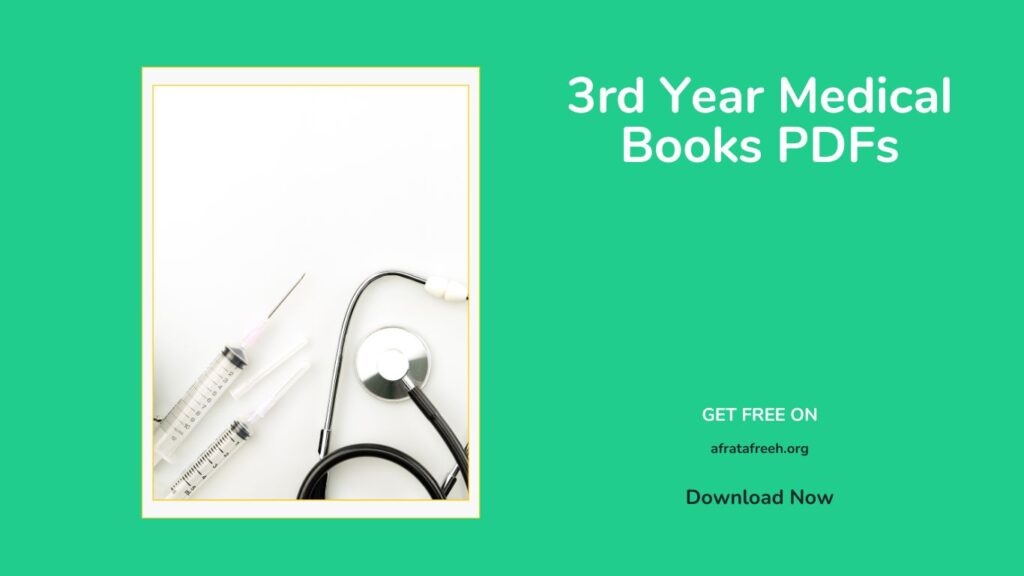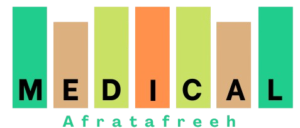Welcome to the clinical battlefield. Third year medical school isn’t just about studying anymore; it’s about becoming a clinician. Your classroom shifts to hospital wards, clinics, and operating theatres. Knowing the core subjects, the absolute best PDF resources for quick reference and deep learning, and how to study effectively in this demanding environment is critical. This guide cuts straight to the data you need to excel globally.
Core Third Year Medical Subjects: The Clinical Pillars
This year immerses you directly in patient care across major specialties. While specific rotations and durations vary by country and medical school (like NMC’s CBME in India, US MD programs, UK MBBS, etc.), these core subjects are universal:
-
Medicine (General Medicine & Subspecialties):
-
What You Do: Diagnose and manage adult diseases. Rotations cover Cardiology, Pulmonology, Gastroenterology, Nephrology, Endocrinology, Neurology, Rheumatology, Infectious Diseases. Focus: History taking, physical examination, interpreting tests (labs, ECG, imaging), forming differential diagnoses, treatment plans.
-
Why It’s Foundational: Develops core clinical reasoning skills applicable to all specialties. High weightage in exams globally (NEXT in India, USMLE Step 2 CK, PLAB).
-
Essential PDF Books (Global & Regional):
-
Harrison’s Principles of Internal Medicine (Global Gold Standard): The ultimate reference. Deep, authoritative. PDFs invaluable for searching symptoms/diseases. Used worldwide (USA, UK, India, EU, Aus, etc.).
-
Davidson’s Principles and Practice of Medicine (Especially UK/Commonwealth): More concise than Harrison’s, excellent clinical focus. Popular in UK, India, Australia.
-
S. Das Manual of Clinical Medicine (India Focus – NMC/CBME): Highly practical, exam-oriented, popular bedside reference for Indian students.
-
Kumar & Clark’s Clinical Medicine (UK/Europe Focus): Strong alternative to Davidson, clear and systematic.
-
First Aid for the USMLE Step 2 CK (USA/IMG Global): The review book for USMLE, also widely used by IMGs everywhere for high-yield facts. PDF ubiquitous.
-
Prepladder Medicine Notes / Marrow Medicine Handbook (India Focus – NEXT): Condensed, high-yield notes tailored for Indian PG entrance exams.
-
-
-
Surgery (General Surgery & Subspecialties):
-
What You Do: Learn principles of operative care, trauma, surgical emergencies, pre/post-operative management. Rotations: General Surgery, Orthopedics, Urology, Anesthesia, ENT, Ophthalmology basics. Focus: Wound care, suturing, assisting in operations, understanding surgical indications.
-
Why It’s Vital: Teaches acute care, procedural skills, and a systematic approach to the surgical patient.
-
Essential PDF Books (Global & Regional):
-
Schwartz’s Principles of Surgery (Global Standard): Comprehensive reference. Essential PDF for deep dives.
-
Bailey & Love’s Short Practice of Surgery (UK/India/Commonwealth): The classic practical textbook. Hugely popular in India (NMC) and UK.
-
S. Das Manual of Surgery (India Focus – NMC/CBME): Practical, exam-focused companion for Indian students.
-
Sabiston Textbook of Surgery (USA Focus): Authoritative American reference, comparable to Schwartz.
-
Washington Manual of Surgery (USA/Global): Excellent pocket-sized guide for quick reference on the wards. PDF highly portable.
-
Prepladder Surgery Notes / Marrow Surgery Handbook (India Focus – NEXT): High-yield review for exams.
-
-
-
Obstetrics & Gynecology (OBG):
-
What You Do: Manage pregnancy, childbirth, female reproductive health, gynecological diseases. Deliver babies, assist in surgeries (C-sections, hysterectomies). Focus: Antenatal care, labor management, common gynecological problems.
-
Why It’s Critical: Unique blend of medicine and surgery, essential life events (birth), common presentations.
-
Essential PDF Books (Global & Regional):
-
Williams Obstetrics & Williams Gynecology (Global Gold Standards): Separate or combined, the definitive references. PDFs essential for detailed study.
-
Dutta’s Textbook of Obstetrics & Dutta’s Textbook of Gynecology (India Focus – NMC/CBME): The dominant standard texts for Indian medical students.
-
Shaw’s Textbook of Gynaecology (UK/Commonwealth Focus): Popular alternative to Williams.
-
Beckmann and Ling’s Obstetrics and Gynecology (USA Focus): Concise, clinically oriented.
-
Prepladder OBG Notes / Marrow OBG Handbook (India Focus – NEXT): Condensed exam prep.
-
-
-
Pediatrics (Paediatrics):
-
What You Do: Care for infants, children, and adolescents. Focus: Growth & development milestones, immunization, common childhood illnesses (infections, malnutrition, congenital issues), pediatric emergencies.
-
Why It’s Unique: Requires understanding physiology and disease presentation specific to developing humans.
-
Essential PDF Books (Global & Regional):
-
Nelson Textbook of Pediatrics (Global Gold Standard): Comprehensive reference. Essential PDF resource.
-
Ghai Essential Pediatrics (India Focus – NMC/CBME): The standard textbook for Indian students, practical and widely used.
-
Forfar and Arneil’s Textbook of Pediatrics (UK Focus): Classic UK text.
-
O.P. Ghai Textbook of Pediatrics (India Focus): Another major reference in India.
-
Rudolph’s Pediatrics (USA Focus): Well-respected American text.
-
Prepladder Pediatrics Notes / Marrow Pediatrics Handbook (India Focus – NEXT): High-yield exam material.
-
-
-
Psychiatry:
-
What You Do: Diagnose and manage mental, emotional, and behavioral disorders (Depression, Anxiety, Psychosis, Substance Abuse). Focus: Psychiatric history taking, mental status examination, basic psychopharmacology.
-
Why It’s Increasingly Vital: High prevalence of mental health issues, essential for holistic patient care.
-
Essential PDF Books (Global & Regional):
-
Kaplan & Sadock’s Synopsis of Psychiatry (Global Standard): Concise yet comprehensive overview. Very popular PDF.
-
Niraj Ahuja’s Short Textbook of Psychiatry (India Focus – NMC/CBME): The go-to book for Indian students, exam-focused.
-
Oxford Handbook of Psychiatry (UK/Global): Excellent practical, portable guide. PDF very useful.
-
*DSM-5-TR (Diagnostic and Statistical Manual)* (Global Reference): Essential for diagnostic criteria. PDF searchable version is crucial.
-
-
-
ENT (Otorhinolaryngology) & Ophthalmology:
-
What You Do: Learn basics of ear, nose, throat, head & neck, and eye diseases. Focus: Common presentations (hearing loss, sinusitis, sore throat, red eye, vision changes), basic examinations (otoscopy, fundoscopy).
-
Why They’re Included: High patient volume in primary care, essential screening skills.
-
Essential PDF Books (Often Region-Specific Short Texts):
-
Dhingra’s Diseases of Ear, Nose and Throat (India Focus – NMC/CBME): Standard Indian text.
-
Parson’s Diseases of the Eye (India/Commonwealth Focus): Standard text for Ophthalmology basics.
-
Kanski’s Clinical Ophthalmology (UK/Global Focus): Highly regarded, visually rich.
-
Cummings Otolaryngology (USA/Global Reference – Deep Dive): Comprehensive reference, PDF useful for specific topics.
-
Prepladder/Marrow Handbooks for ENT & Ophthalmology (India Focus – NEXT): High-yield summaries.
-
-
Who Needs These 3rd Year Medical PDF Books?
-
MBBS/BDS Third-Year Students: The primary audience globally.
-
Interns (House Officers): Crucial reference during first clinical year post-graduation.
-
International Medical Graduates (IMGs): Preparing for licensing exams (USMLE Step 2 CK, PLAB, NEXT) rely heavily on core PDFs like Harrison’s, First Aid Step 2 CK, Kaplan & Sadock, and region-specific texts.
-
Junior Residents: Foundational reference during early specialization.
-
Physician Assistants & Nurse Practitioners: In relevant clinical programs.
Mastering the Wards: Data-Backed Study Strategies for 3rd Year
Forget passive reading. Clinical years demand active integration:
-
Patient-Centered Learning is King: For every patient you see:
-
Read Up: Immediately consult your core PDF (Harrison’s, Bailey & Love, Dutta’s, Nelson) on their diagnosis. Use the search function!
-
Deep Dive: Understand pathophysiology (link back to 2nd year Path/Pharm!), clinical features, investigations, management.
-
Present & Discuss: Formulate your assessment and plan. Be ready to defend it to seniors.
-
-
Question Banks are Non-Negotiable: Apply knowledge daily. Essential for:
-
USMLE Step 2 CK: UWorld (gold standard), Amboss, Kaplan Qbank.
-
NEXT (India): Prepladder QBank, Marrow QBank, Past Exam Papers.
-
PLAB (UK): Passmedicine, Pastest.
-
University Exams: Past papers are critical.
-
-
Active Recall & Spaced Repetition: Use Anki religiously. Create cards from:
-
Patient encounters (diagnosis criteria, key management points)
-
Question bank explanations (especially UWorld/NEXT QBanks)
-
High-yield facts from First Aid Step 2 CK / Prepladder/Marrow Notes.
-
-
Focus on High-Yield Clinical Skills:
-
History & Physical: Practice constantly. Learn efficient, targeted exams.
-
Procedures: Master basic suturing, IV lines, catheterization, blood draws. Watch videos, practice on models.
-
Interpretation: ECG, basic X-rays (Chest, Bone), blood reports, ABGs. Use dedicated PDF guides/apps.
-
-
Leverage PDF Advantages on the Go:
-
Search Function (Crucial): Instantly find disease info during rounds or clinic.
-
Portability: Carry your entire library on tablet/phone.
-
Annotation: Highlight and add digital notes directly on patient-specific topics.
-
Cost/Accessibility: Often more affordable; vital for IMGs/students with budget constraints. Always prioritize legal sources when possible (Publisher sites, University Libraries, NCBI Bookshelf).
-
-
Find Reliable PDF Sources (Use Ethically):
-
Official Publisher Platforms: Elsevier ClinicalKey, McGraw-Hill AccessMedicine, Wolters Kluwer Ovid (Purchase or institutional access).
-
University Library Subscriptions: Your best legal source for core textbooks.
-
NCBI Bookshelf: Offers free, legal access to some key texts (e.g., StatPearls topics).
-
Reputable Educational Sites: Some offer sample chapters or open resources. Avoid illegal/pirate sites. Risks include malware, outdated/inaccurate content, and ethical violations impacting patient care.
-
The Bridge to Becoming a Doctor
Your third year transforms theory into practice. By mastering clinical reasoning in Medicine with Harrison’s or Davidson’s, surgical principles with Bailey & Love or Schwartz, the wonders and challenges of childbirth with Williams or Dutta, the unique needs of children with Nelson or Ghai, the complexities of the mind with Kaplan & Sadock or Ahuja, and the essentials of ENT/Eye with Dhingra/Parson’s, you build the indispensable skills of a clinician.
Supplement these core texts with high-yield PDFs like First Aid Step 2 CK or Prepladder/Marrow notes for efficiency. Study actively through patient encounters, relentless QBank practice, and Anki. Embrace the wards, prioritize ethical learning, and remember: every patient is your ultimate textbook. This demanding year forges the doctor you will become. Start strong, stay curious, and learn safely.


